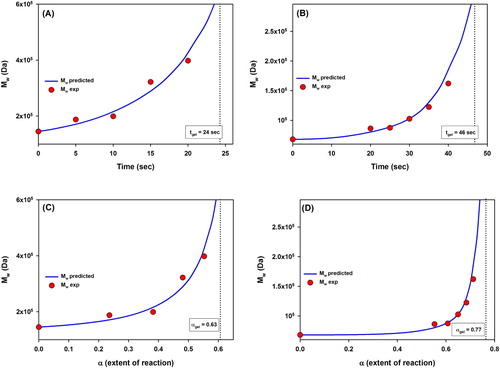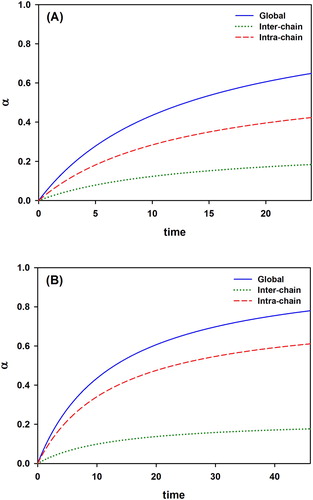Figures & data

Figure 1. Copolymer chains showing crosslinking inter-chain (solid lines) and intra-chain interactions (dotted lines). The ESM model allows to discriminate them through a special matrix to better predict the curing kinetics.
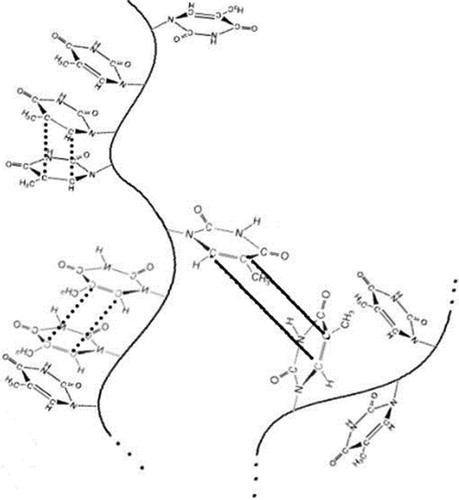
Figure 2. GPC chromatograms. (A) Mixture of GPC standards (retention times: 21.36, 19.92 , 19.10, 17.42 min), (B) Washed solutions of VBT:VBA4 copolymer 0.4% AIBN (retention time 17.83 min) and (C) VBT:VBA4 copolymer 1.0% AIBN (retention time 19.36 min) at various irradiation times. Inset: Area under the GPC peak as function of irradiation time.
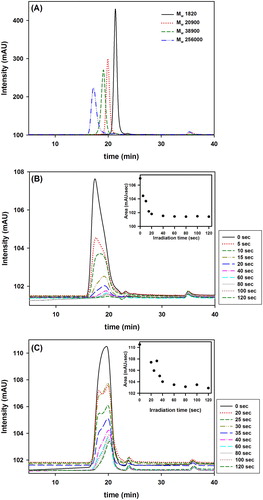
Table 1. Weight-average molecular weight and molecular weight distribution for two different VBT:VBA4 copolymers.
Figure 3. UV–Vis spectra of the VBT:VBA4 copolymer (0.4% AIBN) washed solution at various irradiation times. Inset: Evolution of the absorbance at 270 nm as function of irradiation time.
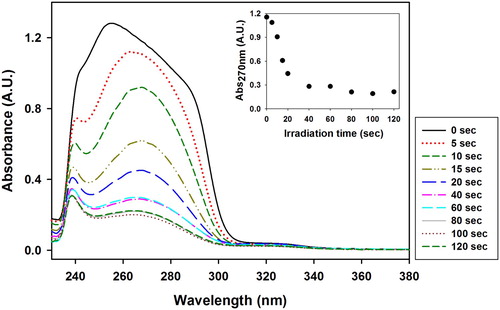
Figure 4. UV–Vis spectra of VBT:VBA4 copolymer (0.4% AIBN) irradiated films toned with FD&C after the washing process at various irradiation times. Inset: Evolution of the absorbance at 501 nm as function of irradiation time.
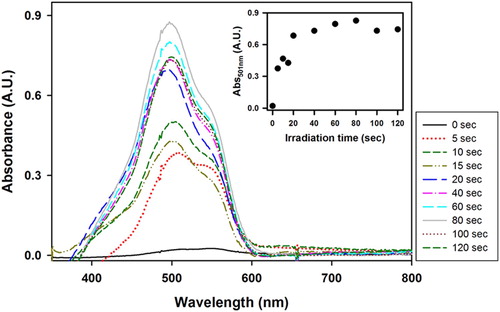
Figure 5. UV–Vis spectra of the VBT:VBA4 copolymer (1.0% AIBN) washed solution at various irradiation times. Inset: Evolution of the absorbance at 270 nm as function of irradiation time.
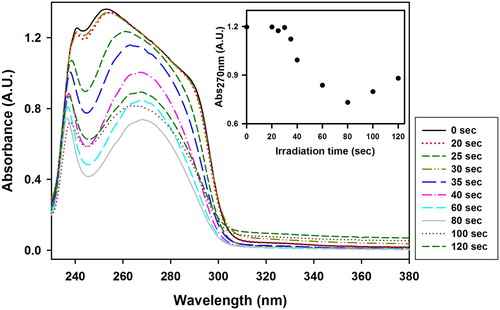
Figure 6. UV–Vis spectra of VBT:VBA4 copolymer (1.0% AIBN) irradiated films toned with Erythrosine B after the washing process at various irradiation times. Inset: Evolution of the absorbance at 545 nm as function of irradiation time.

Table 2. Parameters used to evaluate the KM/ESM model.
Figure 7. Molecular weight evolution as function of time (A, B) or extent of reaction (C, D) for the VBT:VBA4 copolymer. (A and C) 0.4% AIBN, (B and D) 1.0% AIBN. Red dots indicate the experimental values found, while blue solid lines show the mathematical model predicted molecular weights for both copolymers. Dotted lines indicate the corresponding gel point times (tgel) and gel points (αgel).
